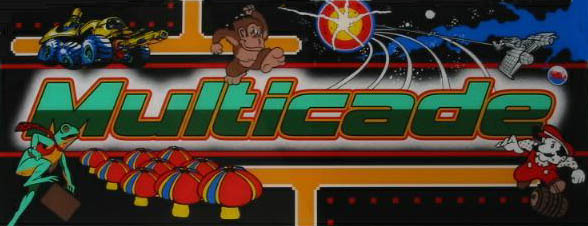
Arcade Preservation: I’m declaring war on those continuing to destroy history
I’ve long been an advocate of preserving the history and culture of video gaming, and it started with me in the late 80s. In 1994 I bought my first arcade games out of a classified ad and became obsessed with restoring the old beasts.
Even as big as the arcade industry was in the early 80s, the number of arcade machines made have never approached the same numbers as most console products. Even the best selling arcade title in US history, Ms. Pac-Man, sold 115,000 – 119,000 units… a number that doesn’t even start to approach the numbers of even poorly selling home console games of yesteryear.
Most classic arcade titles sold less than 20,000 copies back then and few since the mid-eighties crash have even sniffed at the five-figure mark. Thing is, most of these old beasts have already been long destroyed. The industry crash saw a great many literally dumped in landfills and burn piles back then, and the vast majority that survived that were converted into newer games, sometimes many times over, ever since.
Around the turn of the century I started seeing people gut games to build MAME systems and the like. When I saw that required gutting a surviving arcade cabinet I felt ill, but it was what it was… a hobbyist doing what they please with one item. I bitched anyway, but the damage was minimal.
Over the past several years, though, the damage is continuing with a more recent enemy: The “Multicade” boards.
The most common of these boards are typically 48 or 60-games-in-one boards, all technically illegal and imported from the land where copyrights don’t mean squat. At first, I saw these boards were ending up in generic JAMMA cabinets or games that were already long since converted, but in more recent years I’ve been seeing perfectly fine classics that survived all this time being gutted in favor of these.
Over the past year some local “game tech” has been gutting original arcade cabinets and turning them into these bootleg bastardizations. Typically a homeowner with an older machine is calling this guy up when their machine breaks down and rather than fixing it, the “game tech” is selling them on the idea that the game is “too old” and can be “upgraded” to a Multicade machine instead.
Over the past year I’ve been called out to fix what this guy “upgraded” and learned that several arcade machines have been wrecked by this guy. Among the victims are titles such as Galaga, Donkey Kong, Centipede, Xevious, Ms. Pac-Man, Galaxian, Dig Dug, Super Pac-Man and Space Invaders.
This past weekend I was called out to fix an original Space Invaders machine. Turned out that it was the 435th one off the assembly line and was all original. I got the call after the owner first talked to this butcher running around out there, and the guy offered to gut it and “upgrade it” into a Multicade. Luckily the owner wanted it to remain all original.
Sadly, this is happening all over the country… and perhaps even more sadly, the number of folks doing this seems to outnumber the folks who are doing true restorations of original classics.
Any original early arcade video games have already had to survive a massive industry crash, popular conversion kits, 1990s fighting games, poor storage conditions and much more. There is no reason a machine that has somehow survived 20, 25, 30 or more than 30 years, fully in tact, should be gutted now by any “professional tech” in the name of a fast buck.
This stuff is the heart of the history of video gaming. Bastardizing them with Multicade boards is destroying pop culture relics. You might as well consummate your marriage on a stack of Action Comics #1 and use the bats in Cooperstown for a pick up baseball game at the local park.
A huge deal was recently made about someone who horribly butchered an antique painting with a half-ass “restoration attempt”. To this video game historian, “upgrading” a classic that has remained in tact for all this time is just as bad.
And I’m going to make sure people start to see it that way.